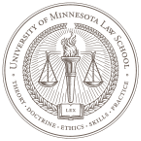Christopher Cerny, MJLST Staffer
Last spring, as the first wave of the coronavirus pandemic hit critical heights, many states faced a daunting reality. The demand for ventilators, an “external set of lungs” designed to breathe for a patient too weak or compromised to breathe on their own, skyrocketed. Hospitals across the United States and countries around the globe clamored for more of the life saving devices. In March and April of 2020, the increasing need for this equipment forced doctors in Washington State, New York, Italy, and around the world to make heartbreaking decisions to prioritize the scarce supply. With this emergency equipment operating at maximum capacity, any downtime meant another potential life lost. But biomeds, hospital technicians who maintain these crucial medical devices, were frequently unable to troubleshoot or repair out-of-service ventilators to return them to the frontlines. This failure to fix the much-needed equipment was not due to lack of time or training. Instead, it was because many manufacturers restrict access to repair materials, such as manuals, parts, or diagnostic equipment. According to one survey released in February 2021, 76% of biomeds said that manufacturers denied them access to parts or service manuals in the previous three months and 80% said they have equipment that cannot be serviced due to manufacturers’ restrictions to service keys, parts, or materials.
While the prohibition of repairs of life support equipment highlights the extreme danger this restriction creates, the situation is not unique to hospitals and emergency equipment. As technology becomes increasingly complex and proprietary, all manner of tech manufacturers are erecting more and more barriers that prevent owners and independent repair shops from working on their products. Tesla, for example, is adamant about restricting repairs to its vehicles. The electric vehicle auto maker will not provide parts or authorize repairs if performed at an uncertified, independent repair shop or end user. Tesla has gone so far as to block cars repaired outside of its network from using its Superchargers. Apple historically also prevented end users from performing their own repairs, utilizing specialized tools and restricting access to parts. John Deere requires farmers to comply with a software licensing agreement that is in appearance designed to protect the company’s proprietary software, but in practice prevents farmers from clearing error codes to start their farm equipment without an authorized technician.
In response to these obstructions to repair, the Right to Repair movement solidified around the simple proposition that end users and independent repair shops should be provided the same access to manuals and parts that many tech companies reserve solely to themselves or their subsidiaries. This proposition is catching on and the legislatures in twenty-five states are currently considering thirty-nine bills involving the right to repair. However, of the thirty-nine bills, only three address medical technology with the bulk of the proposals devoted to general consumer products—think appliances, iPads, and smart devices—and farm equipment.
Massachusetts is an early adopter of right to repair laws. Its legislature passed a law in 2012 specific to motor vehicles that, inter alia, standardized diagnostic and service information, mandated its accessibility by owners and independent or third-party repair shops, and established any violation of the provisions of the act as an unfair method of competition and an unfair trade practice. This past November, Massachusetts voters approved a ballot measure that expanded the scope of the 2012 right to repair law and closed a loophole that could circumvent the requirements imposed in the earlier statute. Automakers lobbied in force to oppose the measure, spending in excess of $25 million in advertising and other efforts. Taking into account the money spent by both sides of the ballot measure, the right to repair initiative was the most expensive measure campaign in Massachusetts history. The European Union is also taking steps to broaden access to repair materials and information. The European Parliament passed a resolution aimed at facilitating a circular economy. Acknowledging the finite nature of many of the rare elements used in modern technology, the European Union is aiming to make technology last longer and to create a second-hand market for older models. The resolution expanding repair access is a part of that effort by ensuring the ease of repair to prolong the life of the technology and delay obsolescence.
Some manufacturers are making concessions in the face of the Right to Repair Movement. Apple, notoriously one of the most restrictive manufacturers, did an about face in 2019 and expanded access to “parts, tools, training, repair manuals and diagnostics” for independent repair businesses working on out of warranty iPhones. Tesla opened its repair platform to independent repair shops in the European Union after the EU Commission received complaints, but the access can be prohibitively expensive at €125 per hour for the use of diagnostics and programming software. However, these minimal efforts are stop-gap measures designed to slow the tide of legislation and resolutions aimed at broadening access to the materials needed to perform repairs to break the monopolistic hold manufacturers are trying to exert over routine fixes.
The Right to Repair movement is clearly gaining ground as the implications of this anticompetitive status quo in the repair and second-hand market was brought into stark relief by the strains imposed by the COVID-19 pandemic, which strained not only hospitals but agriculture, infrastructure, and day-to-day life. The impact of these restrictions on independent repair shops, farmers, consumers, patients, and do-it-yourselfers more than ever became an obvious impediment to health, safety, and a less extractive economy. And as shown in Massachusetts, voters are responding by expanding the right to repair, even in the face of expensive lobbying and advertising campaigns. Legislators should continue to bring additional bills, especially addressing the restrictions on repairs of emergency medical equipment and should enact the existing proposals in the twenty-five states currently considering them.

